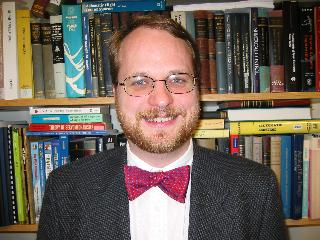Analog Bipolar Circuits
Lecturer: Kent LundbergCovers the analysis and design of analog circuits using bipolar junction transistors. The course includes coverage of fundamental and historical material, including op amps, buffers, bandgap references, translinear circuits, bipolar digital circuits, and the charge control model. Insight and intuition, as well as analysis tools and familiarity with common building blocks, are emphasized to design useful circuits using active devices. The tools and methods studied can be applied to circuits using JFETs, MOSFETs, MESFETs, future exotic devices, or even vacuum tubes.
- Bipolar Transistor Models and Circuits
- Some transistor physics
- Transistor small-signal model
- Short-circuit current-gain-bandwidth product
- Transistor circuit biasing
- Amplifier Topologies
- Single-transistor amplifiers
- Current mirrors
- Differential pairs
- Bipolar Op Amp Topologies
- A simple op amp
- Fairchild μA741 biasing network
- Fairchild μA741 small-signal model
- Op amp history
- Commercial Op Amp Circuits
- Buffer ICs
- Early commercial op amps
- Current-feedback op amps
- Voltage and Current References
- Some transistor physics
- Voltage drift
- BJT-based references
- Zener diodes
- Bandgap Reference Circuits
- The bandgap reference idea
- Three-terminal regulators
- Commercial ciruits
- PTAT current sources
- Translinear Circuits
- Nonlinear circuits
- Some multipliers
- The Gilbert principle
- Pythagorators and RMS-to-DC
- Mixers, Modulators, and Multipliers
- Voltage-to-current converters
- Two-quadrant multipliers
- Four-quadrant multipliers
- Commercial multipliers
- The Charge-Control Model
- Transistor physics, again
- Forward active region
- Reverse active region
- Saturation is bad
- Digital Circuits in Bipolar Technology
- Space-charge layers
- The complete model
- The evolution of TTL
- ECL and I2L
Custom Courses
Custom courses, tailored specifically to your needs, are available. Inquire within.
Lecturer

Kent H. Lundberg is an educator, consultant, and historian. He is president of Keeling Flight Hardware, Ltd., which provides design, research, and educational consulting services in the fields of aerospace, electronics, and control systems for companies, universities, and government organizations.Since 2008, Dr. Lundberg has been a Visiting Professor at Olin College of Engineering, where he teaches courses in controls, circuit design, and instrumentation. From 2002 to 2005 and in 2011, he was a Lecturer with the Department of Electrical Engineering and Computer Science at the Massachusetts Institute of Technology. His research and teaching interests include the application of classical control theory to problems in analog circuit design, and the development of educational toys (lecture demos, take-home laboratory kits, and tutorial computer applications) for feedback systems and control engineering.
Dr. Lundberg was the Associate Editor for History of IEEE Control Systems Magazine from 2004 to 2011. He attended M.I.T. earning a Bachelor's degree in physics in 1992, and a Ph.D. in electrical engineering in 2002. He owns 43 Tektronix oscilloscopes, and he obsessive-compulsively collects analog synthesizers, technology artifacts, and classic textbooks on radar, nuclear energy, analog computing, and control.
Last updated at 10:11 on Thursday, 10 Jan 2013. by Kent Lundberg